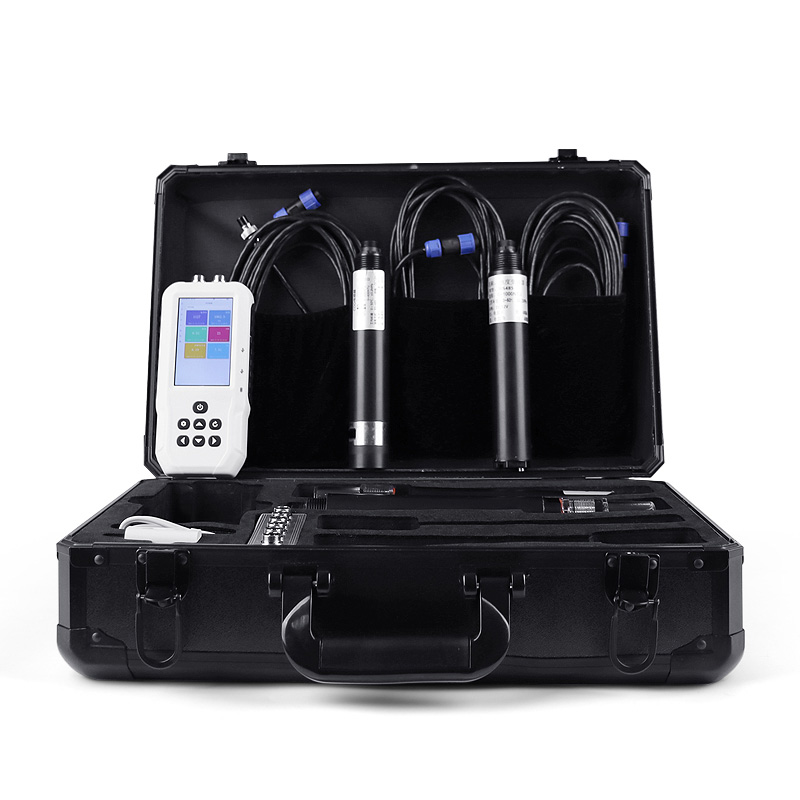Tianyi Sensor IOT Technology Co., Ltd
Sales Manager:Ms. Emily Wang
Cel,Whatsapp,Wechat:+86 15898932201
Email:info@fengtutec.com
Add:No. 155 Optoelectronic Industry Accelerator, Gaoxin District, Weifang, Shandong, China

Sales Manager:Ms. Emily Wang
Cel,Whatsapp,Wechat:+86 15898932201
Email:info@fengtutec.com
Add:No. 155 Optoelectronic Industry Accelerator, Gaoxin District, Weifang, Shandong, China

Model:FT-SS7
Brand:tianyi
1.Introduction to Conductivity Meter Products
Conductivity Meter is an instrument used to measure the electrical conductivity of liquids and works by measuring the ability of a solution to conduct electricity.SS7 model Conductivity Meter is an electrode method water quality analysis instrument that uses all digital electrode detection to detect water quality conductivity parameters.The instrument is equipped with a self-developed FTIOT operating system, which has simple operation, stable performance, accurate measurement, wide detection range, and has a built-in high-capacity rechargeable lithium battery, which is convenient for users to conduct water quality inspection at any time in the field and in the laboratory.
2.Conductivity Meter host parameters
| Charging input voltage | 4.5V-5.5V |
| Charging current | <2A |
| Screen size | 3.5 inches |
| Screen resolution | 480*800☆ |
| Screen interface | MIPI DSI☆ |
| USB port | 2 (Support external expansion of mouse, keyboard, 4G, etc.)☆ |
| Type-C | 1 (Support external expansion of mouse, keyboard, 4G, etc.)☆ |
| RS485 | 2 (Support Modbus, json, asc input, etc.) |
| External sensor power supply voltage | 12V |
| External sensor power supply current | 1A |
| operating system | ftiot (based on Linux-5.4)☆ |
| CPU | 2*Cotex-A7, 650Mhz☆ |
| RAM | 512M DDR3☆ |
| Flash | 8G-64G |
| OpenGL | ES 2.0☆ |
| Wifi | support |
| 4G | Selection |
| button | support |
| Capacitive touch screen | support |
| Software Architecture | B/S☆ |
| Web access | Support ☆ |
| MTP mode | Support ☆ |
| Multi-terminal login | Support ☆ |
| IPV6 | Support ☆ |
| Sensor communication method | RS485, TCP, UDP, Http☆ |
| Data forwarding method | RS485, TCP, UDP, Http☆ |
| Remote SSH | Support ☆ |
| Remote debugging | Support ☆ |
3.Conductivity Meter sensor parameters and configuration
| Serial number | name | Measurement range | principle | Measurement accuracy | Configuration | Remark |
| 1 | temperature | 0~50℃ | High-precision digital sensor | ±0.3℃ | ||
| 2 | pH | 0~14 (ph) | Electrochemistry (salt bridge) | ±0.1PH | ||
| 3 | ORP | -1500mv~1500mv | Electrochemistry (salt bridge) | ±6mv | ||
| 4 | Conductivity | 0~5000uS/cm, 0~10000uS/cm | Contact electrode method | ±1.5% | ✔ | |
| 5 | TDS | 0~20μS/cm (TDS 0-10mg/L) | Contact electrode method | ±1.5% | ||
| 6 | salinity | 0-2.5ppt or 0-80ppt | Contact electrode method | ±0.05ppt or ±1ppt | ||
| 7 | Sludge concentration | 0~20.000g/L | Scattering light method | ±5% (depending on sludge homogeneity) | ||
| 8 | Turbidity | 0~40NTU (low turbidity) | Scattering light method | ±1% | Optional | |
| 0~1000NTU (medium turbidity) | Scattering light method | ±1% | ||||
| 0~3000NTU (high turbidity) | Scattering light method | ±1% | ||||
| 9 | Dissolved oxygen | 0~20mg/L | Fluorescence life method | ±2% | ||
| 10 | Ammonia nitrogen | 0-1000.00mg/L (default) 0-100.00mg/l/ (customizable) | Ion Selection Electrode Method | 10% of reading, ±0.5℃ | ||
| 11 | Suspension | 0~2000mg/L | Scattering light method | ±5% (depending on sludge homogeneity) | ||
| 12 | Residual chlorine | 0~5.00mg/L | Ion Selection Electrode Method | ±5% of reading | The best accuracy is when the flow rate is 0.42m/s-0.85m/s | |
| 13 | Chloride ions | 0-3500.0mg/L | Ion Selection Electrode Method | ±5% | ||
| 14 | Total hardness | 0~1000.0mg/L | Ion Selection Electrode Method | ±10% of reading | ||
| 15 | cod | 0~500mg/L | UV254 absorption method | ±5% | COD and chlorophyll have automatic cleaners, which can prevent biological adhesion and avoid light window contamination, so as to ensure that long-term monitoring is still stable; automatic cleaning time and cleaning times can be set, and the power consumption is 0.7W | |
Tianyi specializes in the research, development and production of meteorological monitoring equipment, with profound technical strength and rich experience in the field of Automatic Farmland Weather Station. The weather stations produced by the company feature high-precision sensors and are made of...
The micro weather sensor is a new-type device designed to meet meteorological monitoring needs across various industries and scenarios. It integrates the attributes of integration, miniaturization and multi-functionality. Inheriting the advantages of high precision, high stability and easy installat...
The growth of crops is closely linked to soil conditions. Harnessing the "advantages of the land" and carrying out crop cultivation in line with local conditions are core measures to increase crop yields. In agricultural production, links such as the selection of spring sowing timing, dete...
Present weather and visibility sensor is a professional meteorological device used for automatically identifying and observing weather phenomena such as fog, rain, snow, mixed precipitation, and clear skies, and for measuring current visibility. It enables fully automatic and accurate recording of weather type, visibility, and precipitation....